How can 3 minutes really be enough?
Spectral HRV analysis used to take 20 minutes. Thanks to advanced algorithms, you can now get the same accuracy in just a fraction of the time.
.jpg)
From the lab to your nightstand
Explore with us the story of 30 years of research, led by Radim Šlachta, co-founder of Elonga.
1996
20-minute lab measurement
Elonga’s story began over 30 years ago
In 1996, physiologist Radim Šlachta ran spectral HRV analysis on classmates at Palacký University. The 20-minute lab test became the foundation for today’s faster, highly accurate Elonga method.
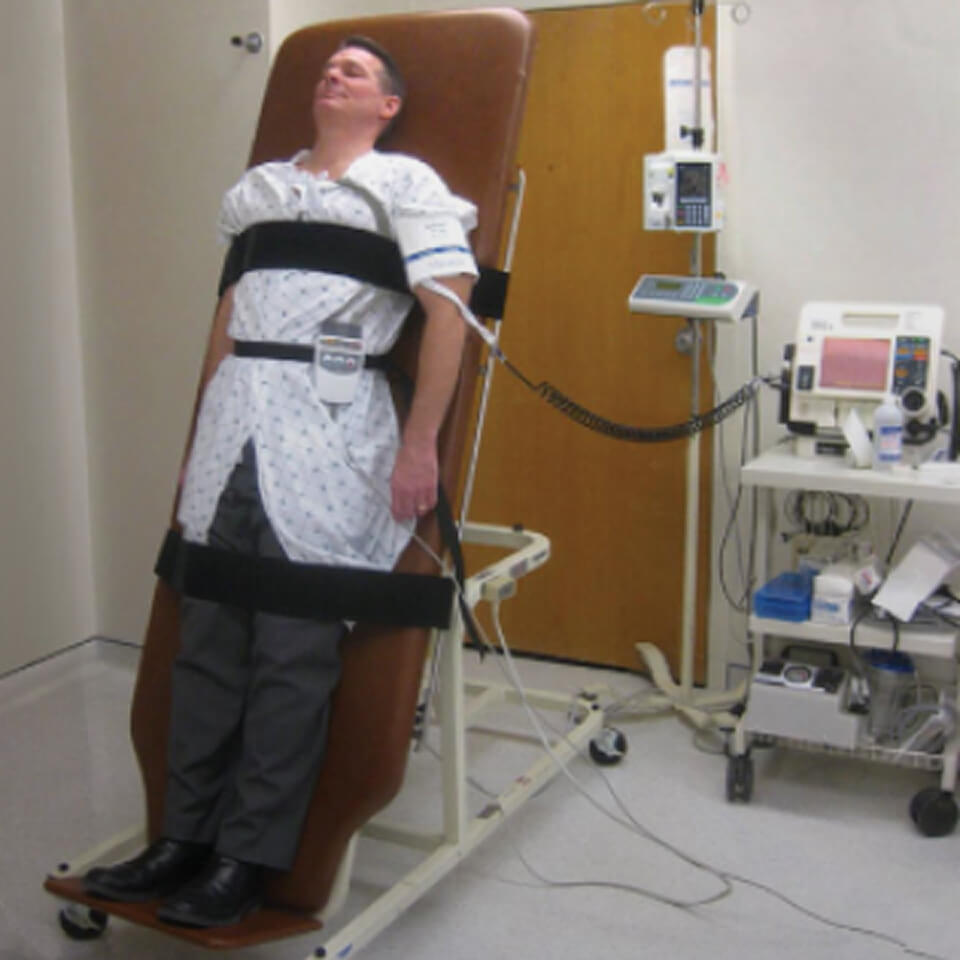


A college experiment that was ahead of the times
In 1992 Radim Šlachta started collecting the first data using spectral analysis as part of his dissertation on his classmates. The technologies of that time made it possible to make measurements only in laboratory conditions, using a specialized electrocardiograph. It was thanks to this method that it was possible to observe in detail the balance between parasympathetic and sympathetic in the autonomic nervous system.

Verified by science, used in practice
The spectral analysis of HRV, according to the International Task Force (1996), is considered the gold standard for evaluating the autonomic nervous system, which unambiguously projects the state of our organism. Scientific works such as Stejskal and Salinger (1996), Botek (2007) or Bahenský and Grosicki (2021) show that HRV correlates with the level of recovery, the risk of overtraining as well as the effectiveness of training methods. Studies applied in clinical and sports practice confirm that heart rate variability is a sensitive indicator of not only physical but also psychological stress and should be evaluated by spectral analysis.
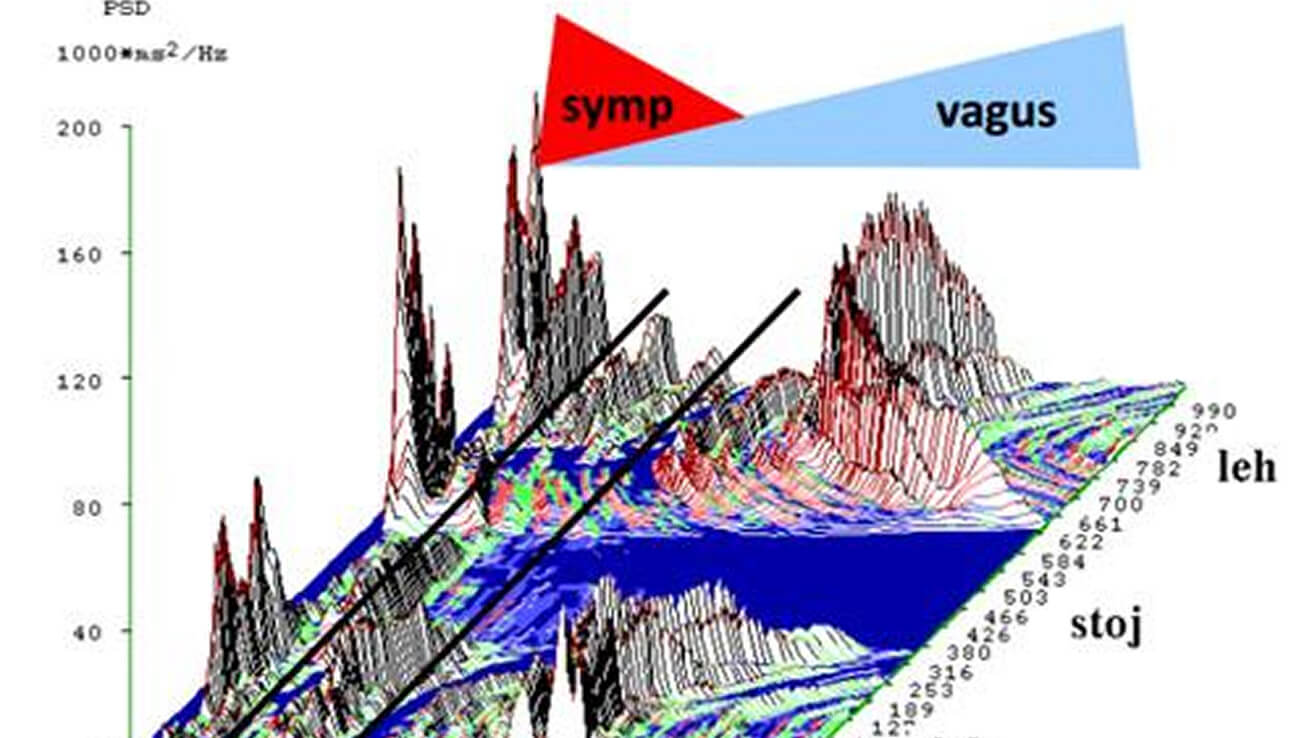
Objective: to give laboratory measurements to the general public
The challenge that Radim Šlachta set himself was to simplify demanding laboratory measurements so that the same quality of data could be obtained outside the research center. Thus, the idea arose to create a device that would transfer the possibilities offered by spectral analysis to ordinary people in the comfort of their own home.
2016
First target group: professional athletes
When performance comes first
After early lab success, it was clear that 20-minute HRV sessions weren’t practical for the public. Šlachta looked for people willing to trade time for deeper insights and found them in pro athletes.



Openness to data that determines outcomes
Elite athletes live in a world where details, thousandths of a second, performance, accuracy and regeneration decide. That is why they were willing to undergo even lengthy laboratory measurements if it gave them an advantage over their rivals. The spectral analysis of HRV offered them the opportunity to optimise training, prevent overload and tune form to peak season.

Verified by science, used in practice
The spectral analysis of HRV, according to the International Task Force (1996), is considered the gold standard for evaluating the autonomic nervous system, which unambiguously projects the state of our organism. Scientific works such as Stejskal and Salinger (1996), Botek (2007) or Bahenský and Grosicki (2021) show that HRV correlates with the level of recovery, the risk of overtraining as well as the effectiveness of training methods. Studies applied in clinical and sports practice confirm that heart rate variability is a sensitive indicator of not only physical but also psychological stress and should be evaluated by spectral analysis.
Beginning of cooperation with national teams and Olympians
Thanks to the high accuracy of measurements, spectral analysis began to be used in Czech and foreign peak preparation. The method was applied, for example, to athletes, football players or cyclists and helped to optimize their long-term load. It was here that it was confirmed that even a complex laboratory method makes sense if it delivers real performance.

2019
300,000 measurements recorded
Scientific progress in spectral analysis
Spectral HRV analysis spread quickly among Europe’s elite, from Premier League footballers to F1 drivers and golf pros. Public demand grew too, but 20 minutes was unrealistic. The solution? Czech mathematicians stepped in.



Popularity among the elite
The method, based on 20-minute spectral analysis, has become standard among athletes across Europe. The measurement experience has been collected by members of Olympic teams, professional cyclists or coaches of professional sports, among others. But the public wanted an easier and quicker route to the same results.
Huge volume of data as a starting point
Over the years of measurements, more than 300,000 laboratory data were available. Each of them captured a detailed response of the body to stress, stress or regeneration. Therefore, the idea arose: what if it were possible to reduce this knowledge to a few minutes, but maintain accuracy?
Connection with Czech scientists and mathematicians
The team around Radim Šlachta approached Czech experts in mathematical modeling and artificial intelligence. Their task was clear, to create an algorithm that would shorten measurements from 20 minutes to a minimum without losing accuracy or depth of analysis. Thus began a new era, the road to Elonga for everyone.
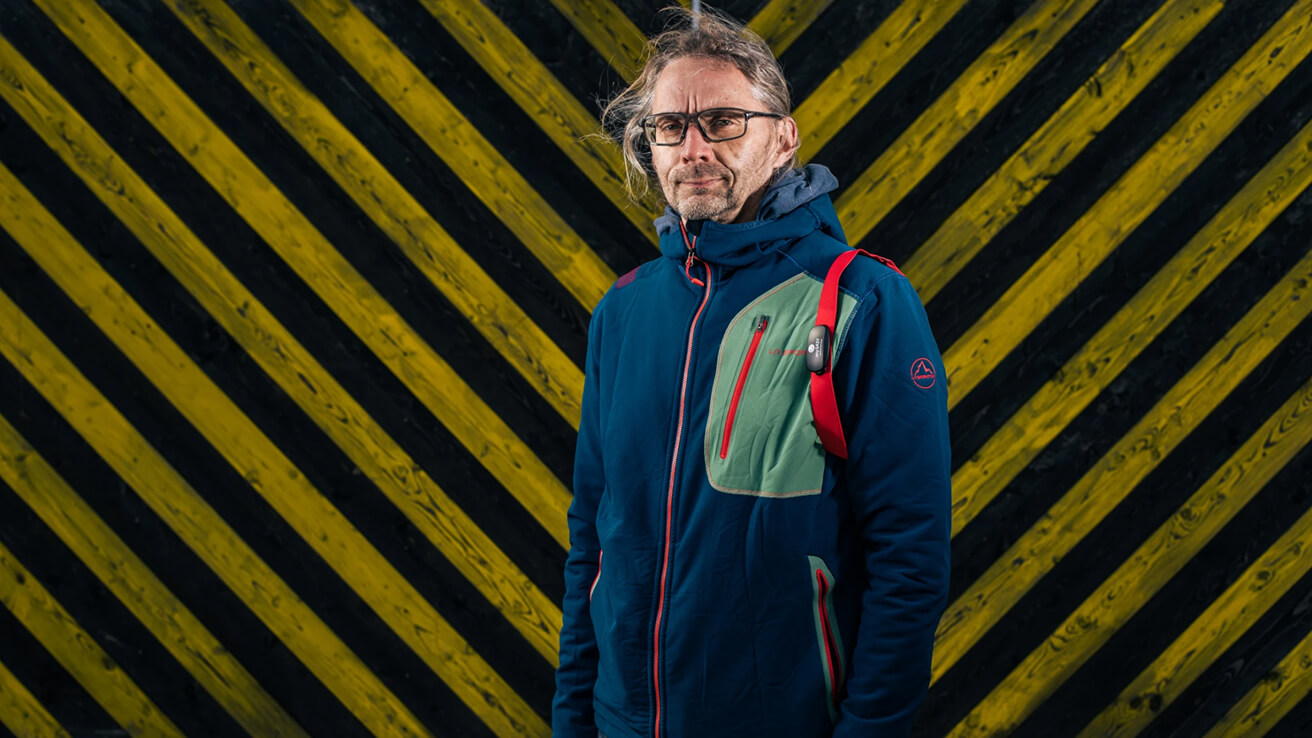
2020
AI before it was cool
From 20 minutes to just 3: testing with a chest strap
2020 marked a breakthrough. After over 300,000 tests, a mathematical model was built that cut the 20-minute lab analysis down to just 3 minutes. This innovation used machine learning before it became mainstream. Elonga helped launch a new era of HRV measurement.
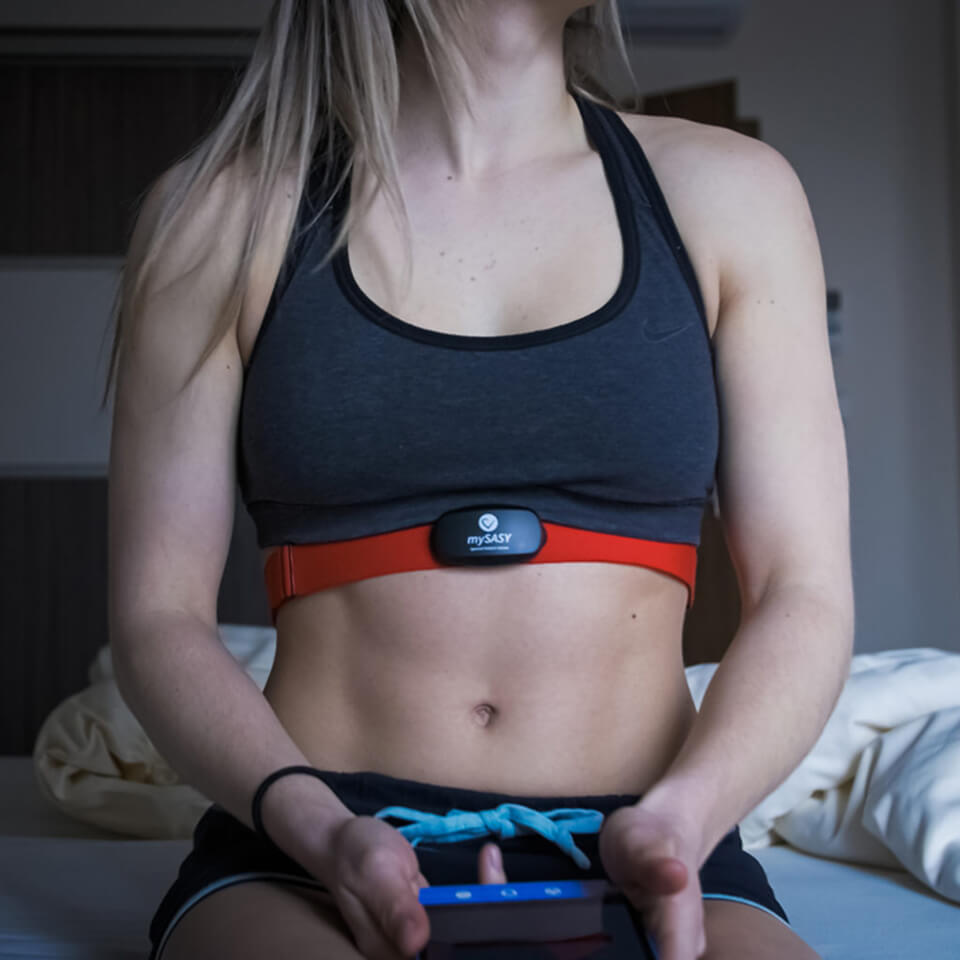


Shortest but most accurate measurement
Thanks to the huge amount of data, it was possible to identify similarities in HRV. Based on the first three minutes of the signal, the algorithm can predict with high accuracy what the remaining 17 minutes of laboratory measurement would look like. This managed to preserve the quality, but completely change the format.

Model 'knows what's coming'
Machine learning has been trained on hundreds of thousands of real-life situations, from everyday life to states of extreme stress, fatigue or peak form. Once Elonga picks up the first three minutes of the HRV signal, the system immediately “selects” the most likely scenario from a database of similar waveforms. It's as if he had 300,000 alternative endings at his disposal.
Technology that was ahead of time
At a time when most wearable electronics relied on simple algorithms, Elonga built the solution on a deep understanding of human physiology and advanced modeling. The result is a unique combination of science, data and technology that can reveal in three minutes what previously took dozens of minutes and required expensive equipment.
2021
Brought it down to 3 minutes. What’s next?
Spectral analysis for everyone: from elite athletes to everyday users
By 2021, 3-minute testing was ready—but a number alone wasn’t enough. It wasn’t just for pro athletes anymore; everyday people wanted to understand their bodies, prevent illness, and live healthier. Elonga had to rethink recommendations and start building a service for everyone.
.jpg)


From performance to health
Elite athletes needed to know when they could train to the maximum. But the public is more interested in regeneration, prevention and long-term health. Therefore, it was necessary to reformulate the outputs: instead of training recommendations, Elonga began to focus on functional age, stress level, quality of recovery and readiness for the day, in short, understandable metrics for everyone.
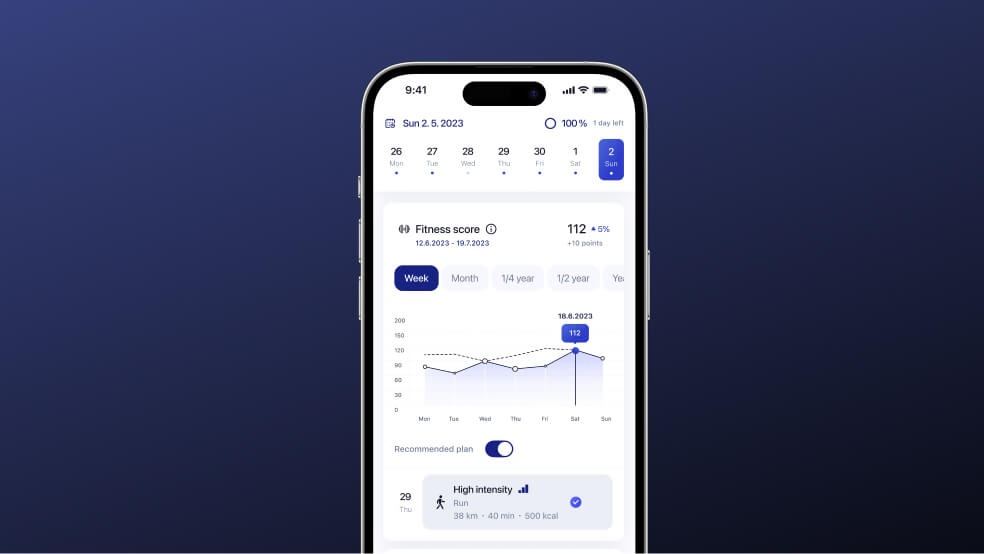
New philosophy
We already know how to work with data. But now we have had to change the way we talk about them. It was no longer a world of performance and coaching tables, there was a need to find a new language telling people not how to exercise, but how to live better. It created a clear dashboard, recommendations for the day and content that teaches users to listen to their own body.
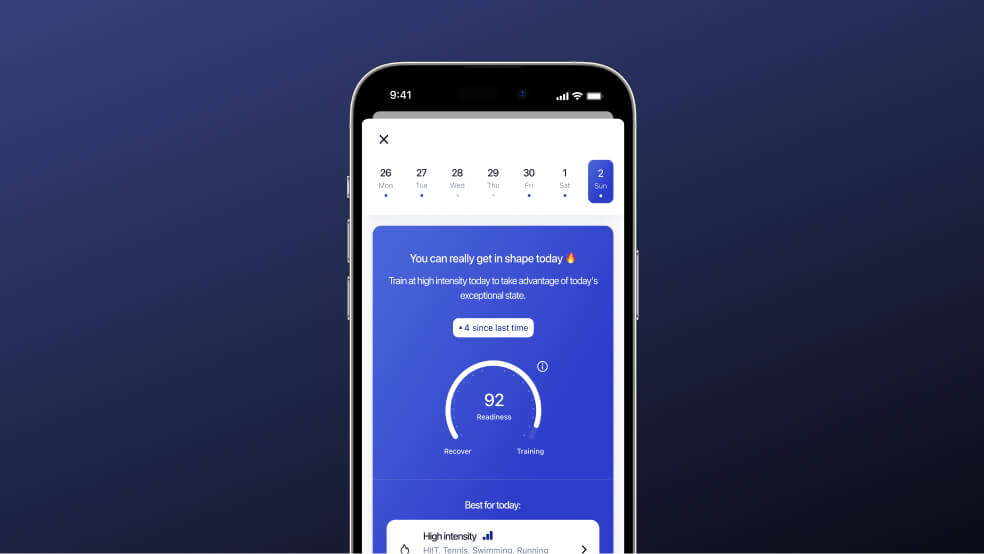
A year and a half of development, testing and debugging
From idea to real service, the journey was full of trials and changes. It was tested with different groups, from students to doctors, from managers to moms. The goal was only one: that the measurement took only 3 minutes, but the result lasted all day. And so that every user gets meaningful and usable information, regardless of their age, fitness or ambition.
End of 2023
Elonga on your nightstand
From lab to life: 30 years of research in the palm of your hand
By the end of 2023, the dream became reality. After 30 years of research, testing, and development, Elonga entered thousands of homes. No bulky lab equipment—just a device that fits in your hand. Every morning, it helps 10,000+ people understand their bodies better. Elonga has become a guide to healthier living.



Rocket launch: 10,000 customers a year
The launch of Elonga exceeded all expectations. In its first 12 months, more than 10,000 users acquired it. The rate of growth has shown that people really want a tool that gives them trustworthy health information without having to intricately measure, count or analyze the data themselves.

A unique technology that is unparalleled
To date, Elonga is the only technology in the world that can use spectral analysis and machine learning to assess the state of the autonomic nervous system in just three minutes after waking up. No complex sensors, no need to wear the device all day, just calm morning measurements and an understandable result.

Beginning of a new era of biofeedback
What Radim Slench imagined 30 years ago is changing people's lives today, from managers who want to prevent burnout, to athletes pursuing regeneration to ordinary users who want to know when to slow down. Elonga doesn't just stand on the bedside table these days. It stands at the beginning of a new era of daily health care.

We use the most precise HRV measurement method
Confirmed by thousands of studies worldwide
.jpg)
Reviews
In our first year, more than 10,000 people started using Elonga
Reviews from

Rated by 1000+ customers





